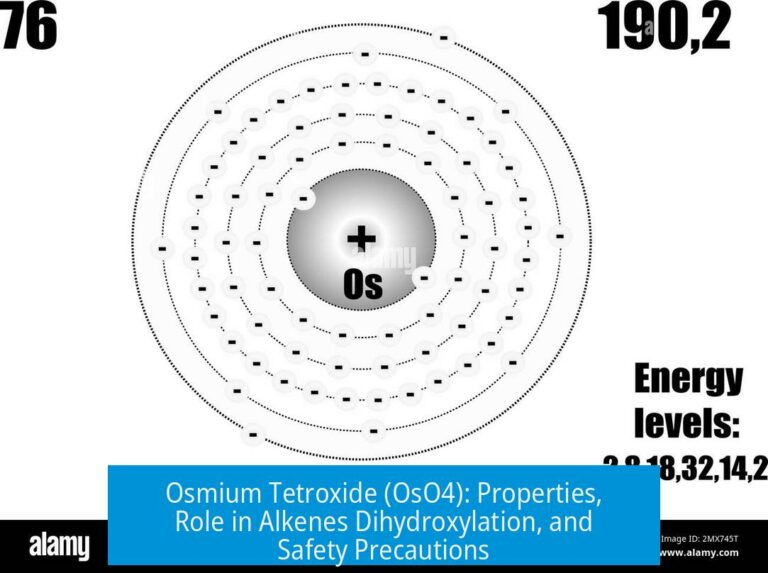Understanding the Relationship Between Ksp and Solubility
The solubility product constant (Ksp) and solubility are closely related. Ksp represents the equilibrium constant for the dissolution of a salt into its ions. Solubility indicates the maximum amount of salt that dissolves in a solvent to form a saturated solution. The connection between them depends on the salt’s dissociation stoichiometry and ion concentrations in solution.
1. What Is Ksp?
Ksp, or the solubility product constant, is an equilibrium constant specific to sparingly soluble salts. When a salt with formula AxBy dissolves, it dissociates into x moles of A ions and y moles of B ions as shown:
AxBy (s) ⇌ x An+ (aq) + y Bm− (aq)
Ksp is defined as the product of the equilibrium concentrations of the ions, each raised to the power of their stoichiometric coefficients:
Ksp = [A]x [B]y
Since the salt is a solid, its concentration is constant and omitted from the expression. Typically, Ksp values are very small, reflecting limited solubility.
2. Why Use Ksp Instead of Direct Solubility?
Solubility measures the maximum grams or moles of salt that dissolve per liter of solvent. Ksp, however, focuses on ion concentrations at equilibrium. Its advantage arises in solutions containing common ions from other sources, which affect salt dissolution.
For example, if a solution contains both NaCl and NaBr, extra Na+ ions reduce the individual solubilities of each salt through the common ion effect. In such scenarios, Ksp better describes equilibrium behavior compared to raw solubility numbers.
3. Differentiating Ion Concentrations from Solubility
For salts that dissociate into multiple ions, ion concentrations are not equal to solubility because ionic amounts multiply by the coefficients from the formula.
Example: For a salt AxBy with solubility s (moles per liter), the concentration of ion A is x × s, and of ion B is y × s.
This difference is crucial when calculating Ksp or converting Ksp to solubility.
4. Calculating Solubility from Ksp Using Roots
Since Ksp involves ion concentrations raised to powers, determining solubility requires taking the root of Ksp. The order of the root corresponds to the total number of ions released per formula unit, which equals x + y.
| Salt Formula | Dissociation | Ksp Expression | Relationship to Solubility (s) |
|---|---|---|---|
| CuS | CuS ⇌ Cu2+ + S2− | Ksp = s × s = s2 | s = √Ksp |
| Ag2S | Ag2S ⇌ 2Ag+ + S2− | Ksp = (2s)2 × s = 4s3 | s = (Ksp/4)1/3 |
| Example with 5 ions | Salt dissociates into 5 ions | Ksp = constant × s5 | s = (Ksp/constant)1/5 |
This method allows conversion of Ksp to solubility quantitatively, taking into account the ion ratio.
5. Differences in Behavior Between Ksp and Solubility Values
Ksp and solubility do not always trend the same way because Ksp is the product of ion concentrations raised to powers. If solubility (s) increases, ion concentrations increase proportionally, but Ksp involves multiplying concentrations multiple times depending on stoichiometry.
Thus, a small change in solubility may cause larger changes in Ksp. Conversely, Ksp may decrease while solubility increases if the stoichiometry involves higher powers or multiple ions. This complexity explains variations in measurements.
6. Using Stoichiometric Ratios to Calculate Solubility
Consider calculating solubility (s) from Ksp using the ionic concentrations:
Let s = solubility (mol/L) For CuS: CuS ⇌ Cu2+ + S2− Then [Cu2+] = s and [S2−] = s Ksp = [Cu2+][S2−] = s × s = s2 Solving gives s = √Ksp
This direct approach works for simple salts. For complex stoichiometries, multiply s by ion coefficients before substituting into the Ksp expression.
7. Conceptual Difference Between Ksp and Solubility
Ksp is a constant that measures the equilibrium position for dissolution; it defines the ion concentration product in a saturated solution at a specific temperature. It is unit-dependent and not a measure of quantity per se. Solubility is a physical quantity indicating how much solid dissolves before saturation.
Solubility depends on temperature, pressure, and solution composition. Ksp is fixed at given conditions and used to predict solubility and saturation behavior.
8. Extracting Solubility from Ion Concentrations and Stoichiometry
At saturation, the ion concentration of each species in solution relates to solubility by dividing by the ionic stoichiometric coefficient.
Solubility (s) = [Ion concentration] / (stoichiometric coefficient)
Example: In Ag2S, where two Ag+ ions are released per formula unit, if the measured Ag+ concentration is 0.02 M, solubility is:
s = 0.02 M / 2 = 0.01 M
9. Functional Forms of Ksp in Terms of Solubility
The equation form varies with salt composition. Some examples:
- CuS: Ksp = s2
- Ag2S: Ksp = 4 s3
- Complex salts: Ksp = constant × ssum of ion coefficients
This explicitly shows that predicting or comparing solubility from Ksp requires attention to ion coefficients and their powers.
10. Summary: What Does This Mean Practically?
- Ksp expresses equilibrium ion concentrations for sparingly soluble salts.
- Solubility shows maximum dissolved amount of salt in solution.
- Stoichiometric coefficients connect ion concentrations and solubility.
- To find solubility from Ksp, take the appropriate root based on total ion count.
- Ksp better describes equilibrium conditions affected by common ions or ionic strength.
- Solubility and Ksp do not always change proportionally because of their mathematical relationship.
Key Takeaways
- Ksp is an equilibrium constant defined as the product of ion concentrations raised to stoichiometric powers.
- Solubility is the amount of salt dissolved at saturation and is related but distinct from Ksp.
- Stoichiometric coefficients determine the relationship between Ksp and solubility.
- Solubility can be calculated from Ksp by taking its root equal to the total number of ions released.
- Ksp values are more useful than raw solubility for understanding equilibrium in multi-ion or common ion systems.
- Understanding this relationship aids predictions of precipitation, dissolution, and saturation in chemical systems.
What does Ksp represent in relation to solubility?
Ksp is the solubility product constant. It expresses the equilibrium concentration of ions from a salt dissolved in water, raised to the power of their stoichiometric coefficients.
How do you calculate solubility from Ksp for salts with multiple ions?
First, express ion concentrations using solubility and stoichiometric ratios. Then, solve the Ksp equation by taking the root that corresponds to the total number of ions produced per formula unit.
Why can Ksp values be low even when solubility appears higher?
Ksp is the product of ion concentrations raised to powers. If a salt produces multiple ions, the multiplication lowers Ksp, even if actual solubility is increasing.
How does the presence of common ions affect the relationship between Ksp and solubility?
Common ions reduce a salt’s solubility by shifting equilibrium. Ksp remains constant, but solubility decreases due to the shared ion’s effect on ion concentrations.
Why can’t Ksp alone determine which salt is more soluble?
Ksp depends on ion stoichiometry. Different salts may have different power relationships between Ksp and solubility, so solubility must be calculated separately for accurate comparison.





Leave a Comment